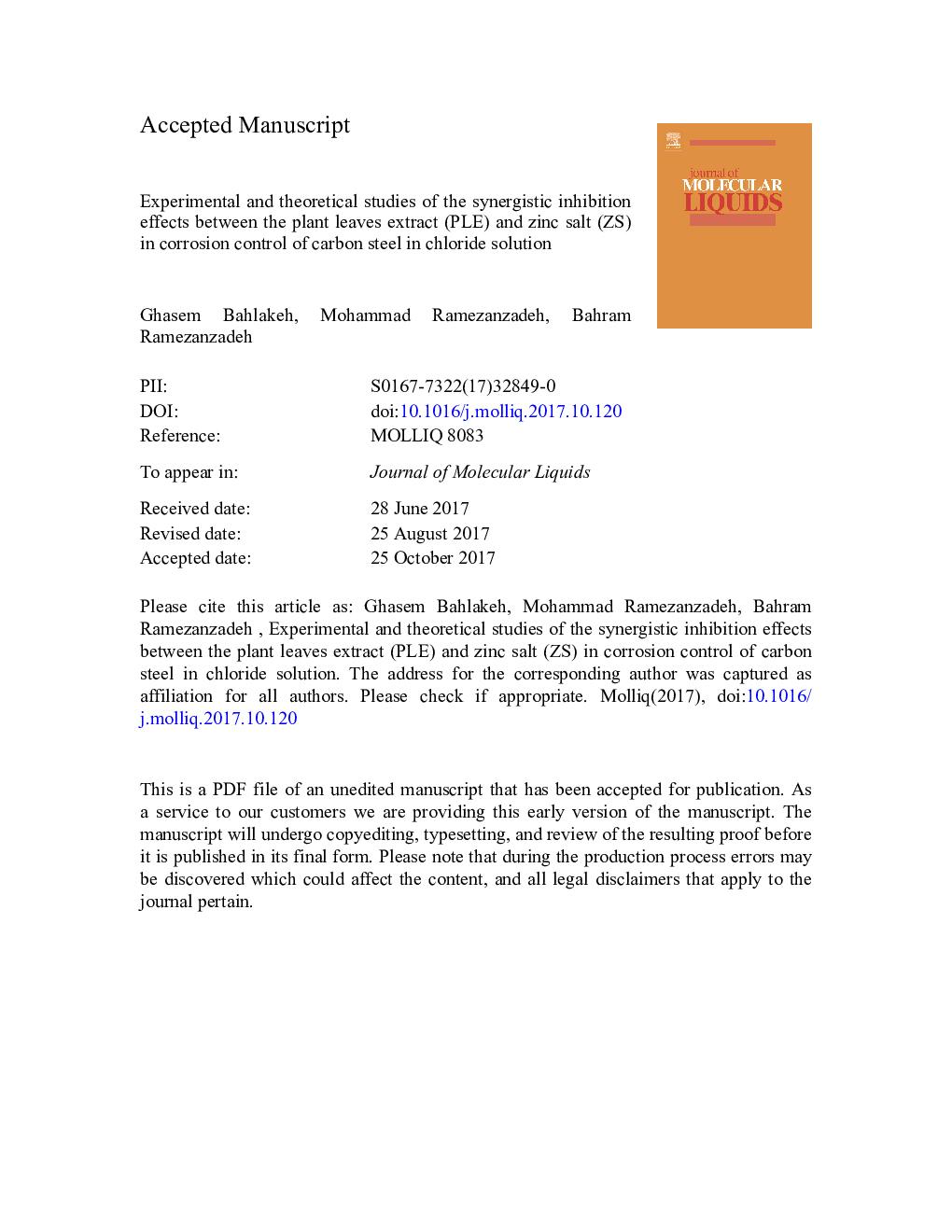| کد مقاله | کد نشریه | سال انتشار | مقاله انگلیسی | نسخه تمام متن |
|---|---|---|---|---|
| 7843915 | 1506523 | 2017 | 50 صفحه PDF | دانلود رایگان |
عنوان انگلیسی مقاله ISI
Experimental and theoretical studies of the synergistic inhibition effects between the plant leaves extract (PLE) and zinc salt (ZS) in corrosion control of carbon steel in chloride solution
دانلود مقاله + سفارش ترجمه
دانلود مقاله ISI انگلیسی
رایگان برای ایرانیان
کلمات کلیدی
موضوعات مرتبط
مهندسی و علوم پایه
شیمی
شیمی تئوریک و عملی
پیش نمایش صفحه اول مقاله

چکیده انگلیسی
The synergistic inhibition effects between green corrosion inhibitors (GCI) extracted from Nettle leaves and zinc cations in corrosion control of carbon steel specimens in 3.5Â wt% NaCl solution were studied by electrochemical techniques, surface analyses, molecular dynamics simulations and electronic-structure approaches. The inhibition mechanism and efficiency of corrosion inhibitors were evaluated by electrochemical impedance spectroscopy (EIS) and polarization test. The morphology and composition of the film deposited on the surface of carbon steel specimens dipped in the chloride solution containing different inhibitors were analyzed by field-emission scanning electron microscopy (FE-SEM) and X-ray photoelectron spectroscopy (XPS). The results obtained from EIS analysis confirmed that combination of zinc salt (ZS, 200Â ppm) and green corrosion inhibitor (200Â ppm, GCI) effectively reduced the carbon steel corrosion in saline solution. Polarization test results demonstrated a mixed type inhibition effect between ZS and GCI inhibitors. Moreover, the results obtained from FE-SEM and XPS analysis showed that the organic compounds like hystamine, serotonin and quercetin could effectively form complexes with zinc cations and establish protective film over the steel surface. Furthermore, molecular dynamics simulations and electronic-structure methods applied on different variants of constructed complex inhibitors (i.e., hystamine-Zn-hystamine, serotonin-Zn-serotonin, and quercetin-Zn-quercetin) revealed that inhibitors adsorbed onto steel substrates via donor-acceptor adhesion mechanism. The theoretical results also clarified that the complexes of quercetin and zinc cation proved the strongest surface adsorption, suggesting their highest corrosion-inhibition performance.
ناشر
Database: Elsevier - ScienceDirect (ساینس دایرکت)
Journal: Journal of Molecular Liquids - Volume 248, December 2017, Pages 854-870
Journal: Journal of Molecular Liquids - Volume 248, December 2017, Pages 854-870
نویسندگان
Ghasem Bahlakeh, Mohammad Ramezanzadeh, Bahram Ramezanzadeh,